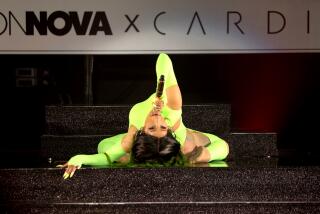Sergio Rossi looks to remain nimble at retail, turns focus to U.S.
Sergio Rossi chief executive officer Riccardo Sciutto is in-between flights with a layover in Paris before arriving in L.A. Tuesday evening as he readies for an event celebrating the opening of the company’s Westfield Century City pop-up.
The format’s nothing new with short-term leases now standard operating procedure for emerging and heritage brands alike. For Sergio Rossi it’s about testing into the West Coast and broader U.S. market with New York also identified as an area to funnel the company’s energies next after the Century City store, which closes March 6.
“For L.A. it’s a good test,” Sciutto said. “We love the market. We love the new direction. We are also looking for our next store. We love the idea of the pop-up. Retail is changing.”
The Century City store will exclusively carry a capsule collection done in collaboration with Elizabeth Stewart, produced with the Time’s Up movement in mind. The assortment of pumps and sandal style bear words such as power, hope, strength and passion stamped onto the leather in a process tested over the course of several months, Sciutto said. The personalization, based on what was important to Stewart, is an important aspect of how he intends to continue repositioning and growing the brand: by listening to the customer and personalizing the product.
After spending much of his initial time at the company looking at the Asian and European markets, Sciutto said “now is the time of America.”
Kering sold Sergio Rossi to Investindustrial in December 2015, with Sciutto coming on board to lead the company in April 2016.
The company has been opening stores and renovating or relocating others in more recent times with Sergio Rossi currently counting 47 company-owned, permanent stores worldwide with two in the U.S.
There’s plenty of opportunity still in the U.S. and South Asian markets with the ceo estimating he could see another 20 Sergio Rossi stores added to the overall door count over time.
“We made a big turnaround on the store distribution. Now we have [nearly] 50 stores around the world,” he said. “Today you need to be very opportunistic and understand when the market is ready and when the location is available. You need to always have a clear idea of where you want to go and a real concrete perception of the market.”
Communicating across generations the story of the brand has been a key area of focus to continue pushing for the brand in a market that’s changing.
“Retail is not the same as it was five years ago or 10 years ago. The department store distribution is not the same,” Sciutto said of the challenges in the U.S. market. “They should change their point of view in order to be much closer to the customer. You cannot approach [customers] by discount and promotion. You have to have an experience, but the experience is not the discount experience. That’s why we’re opening more stores because we can speak directly with the customer. We never told properly the real Sergio Rossi story in America. L.A. is a good point where you can finally see the new Sergio Rossi.”
Since joining the company, Sciutto said he’s pulled on a number of levers all relating to playing up the company’s heritage, while also innovating at the factory level, speeding up production times as the company ramps customization offerings for customers with the factory able to produce over 1,000 pairs of shoes daily. The ceo said the factory now receives requests from other brands to make their shoes in Sergio Rossi’s San Mauro Pascoli facility.
“I put 24 hours on everything, but the main focus, the first step, was understanding who we are really and understanding all the mistakes that we made in the past. Why we made them and then go to the next stage,” he said. “I also put the focus on the factory and the heritage. I made an archive. Next time you’re in Europe, you should come with me and you will see over 6,000 shoes.”







